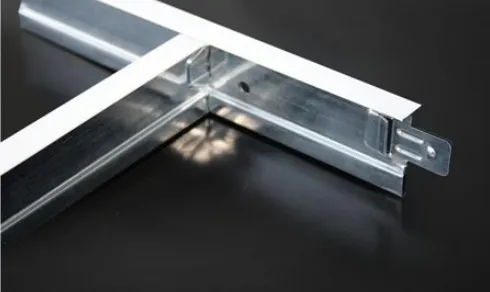Dec . 21, 2024 09:03 Back to list
grid ceiling material price
Understanding Grid Ceiling Material Prices Factors and Trends
In the world of interior construction and design, grid ceilings have emerged as a popular choice for both aesthetic appeal and functional benefits. Often found in commercial spaces, educational institutions, and even homes, grid ceilings provide a streamlined and versatile solution for managing lighting, sound, and mechanical systems. However, the cost of grid ceiling materials can vary significantly, influenced by a range of factors. This article will delve into the intricacies of grid ceiling material prices, shedding light on what drives these costs, current market trends, and tips for making the most cost-effective choices.
Factors Influencing Grid Ceiling Material Prices
1. Material Type The choice of materials has a direct impact on the price of grid ceiling systems. Common materials include mineral fiber, metal, and vinyl, each offering different aesthetic qualities and utility. Mineral fiber ceiling tiles, for example, tend to be more economical than metal tiles, which are particularly suitable for high-end applications due to their durability and modern look.
2. Thickness and Density The thickness and density of the tiles also play a critical role in price determination. Higher density tiles often provide better sound absorption and durability, which justifies a higher cost. Buyers must consider their specific needs—prioritizing acoustics or aesthetics can lead to different material choices and price points.
3. Texture and Finish The texture and finish of ceiling tiles contribute not only to the visual appeal but also to their price. Simple, smooth finishes are generally less expensive than tiles with complex patterns or textures, which require more manufacturing effort. Custom finishes can significantly increase the overall cost of grid ceiling systems.
4. Brand and Supplier Prices can also fluctuate based on brand reputation and supplier markups. Established brands with a history of quality may charge more for their products, but they often come with warranties and customer support, offering peace of mind. It’s essential to balance quality and cost, and sometimes lesser-known brands present excellent value for money without significant compromise on quality.
5. Regional Variations Geographic location plays a pivotal role in pricing. Transportation costs, local demand, and regional building codes can all impact prices. Urban areas with higher costs of living typically see elevated material prices, whereas more rural locations may offer more competitive pricing.
Current Market Trends
The market for grid ceiling materials is constantly evolving. Eco-friendly options are gaining traction, with an increasing number of manufacturers introducing sustainable ceiling tiles made from recycled materials. These products, while often higher in initial cost, can offer long-term savings through improved energy efficiency and lower lifecycle costs.
grid ceiling material price

Additionally, technological advancements are leading to the development of smart ceiling solutions, integrating lighting, sensors, and acoustics into one modular system. While these innovations come at a premium, they provide enhanced functionality and can significantly improve overall building performance.
Cost-Effective Buying Tips
To navigate the complexities of grid ceiling material pricing effectively, consider the following tips
- Conduct Thorough Research Compare prices from multiple suppliers and explore various material options. Websites that specialize in construction materials can provide insights into current prices and trends.
- Buy in Bulk Purchasing materials in bulk can often yield considerable discounts. If you're overseeing a larger project, negotiating with suppliers for a bulk order can lead to substantial savings.
- Consider Long-Term Value Opting for slightly higher-priced materials that offer better durability and performance can save money over time, as you may face fewer replacement and maintenance costs.
- Explore Used or Liquidation Options For those on a tight budget, considering gently used or surplus materials can present an opportunity for significant savings without sacrificing quality.
Conclusion
Grid ceiling material prices are shaped by a myriad of factors, including material type, density, supplier reputation, and market trends. Understanding these influences is crucial for making informed decisions that balance quality, aesthetics, and cost. With the right research and strategic planning, achieving a beautiful and functional grid ceiling design within budget is entirely feasible. As the market continues to evolve with eco-friendly and technologically advanced solutions, there are exciting, cost-effective prospects for creating modern interiors that meet both style and utility needs.
-
Durable Ceiling T Grid Systems | Easy InstallationNewsAug.29,2025
-
PVC Gypsum Ceiling: Durable, Laminated Tiles for Modern SpacesNewsAug.28,2025
-
Pvc Gypsum Ceiling Is DurableNewsAug.21,2025
-
Mineral Fiber Board Is DurableNewsAug.21,2025
-
Ceiling Tile Clip Reusable DesignNewsAug.21,2025
-
Ceiling T Grid Modular DesignNewsAug.21,2025







